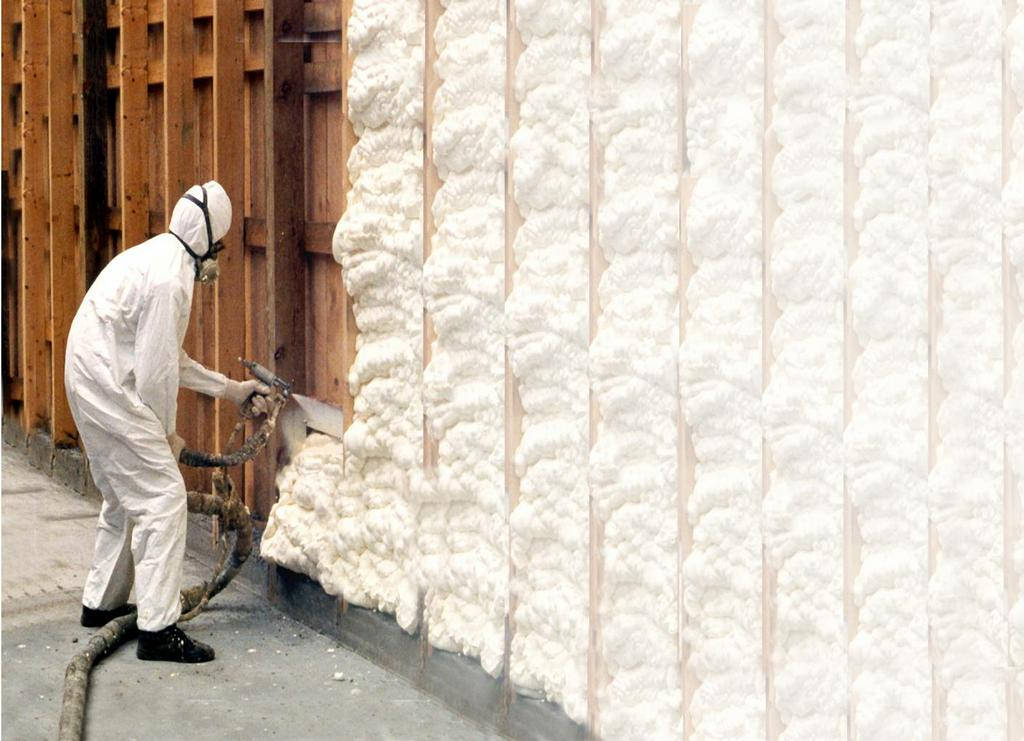Insulation Foam: Changing The Way Energy Is Consumed
Jan 26, 2023 02:58
Insulation foam has been around for decades, and it continues to grow in popularity as it becomes more cost-effective to use in insulating residential and commercial areas, buildings, warehouses, and many more. It can be used for many different purposes, including insulation, sound absorption, and fire retardation. Let’s learn more about insulation foam below.

What Is Insulation Foam?
Insulation foam is a type of insulation material that is injected into the wall cavities of buildings and structures to provide thermal wall insulation. It is made from polyurethane or polyisocyanurate, and it can be used as a building insulating material. It has excellent sound-absorbing properties and can also be used in the construction of other types of building materials, such as fibreglass. Schools and universities use the insulation foam to insulate classrooms, auditoriums, hallways, and lecture halls. This material is also used in warehouses to provide thermal protection for concrete slabs or wall insulation.
In addition, insulation foam is a type of insulation material that is used for energy efficiency and protection from heat loss. It is made up of polyurethane, polystyrene, or polyisocyanurate. Insulation foam is a great insulating material because it has a high R-value and will keep your home warm in the winter and cool in the summer. It can also be used as an air sealant to prevent air infiltration into your home.
What Are The Different Types Of Insulation Foam?
Insulation foam is a type of polyurethane-based foam that is used to insulate surfaces or wall insulation. The material can be applied in a variety of ways, and it can be made to fit any need or requirement.
The different types of insulation foam are:
Closed-cell
This type of insulation is made up of cells that are filled with air, which makes the material more rigid and less compressible than open-cell. It also makes it easier to instal and handle. Closed-cell is more costly than open-cell because it requires larger amounts of material to produce and more insulation to cover it.
Open-cell
This type of insulation has cells that are filled with a gas like helium, argon, or nitrogen. These types are cheaper, lighter, and more flexible than closed-cell foams. However, they provide less thermal resistance and have a lower R value. They also require more care when handling them, as they will expand if exposed to moisture or humidity for long periods of time.
Benefits Of Insulation Foam In The Construction Industry
Insulation foam is one of the most popular construction materials in the world for wall insulation. It has a wide range of uses, including as a material for insulation in commercial buildings, schools, houses, and many more. Insulation foam has many benefits for the construction industry, and it is becoming more popular in recent years. It can be used to insulate buildings, reduce noise pollution, and prevent fires from spreading.
Here are more benefits of using insulation foam in the construction industry:
- Insulation foam is also a low-cost material that can be used on a variety of projects.
- Insulation foam is easy to instal and maintain.
- Insulation foam can be used as sound insulation.
- Insulation foam can be used as fire protection.
- Insulation foam has a high R-value, which means it can keep the heat out or keep the heat in depending on what you need it for.
- Insulation foam provides thermal resistance and sound absorption properties that are unmatched by other materials like wood or steel.
Are There Any Drawbacks To Using Insulation?
Insulation foam is a common insulation material used in new construction projects. However, there are some disadvantages to using this type of insulation. One drawback is that it doesn't provide the best thermal resistance and can be damaged by water or mould when used for wall insulation. Another drawback is that it can create moisture problems if not installed properly. Then, insulation foam is also made from petroleum-based products, which may lead to a slow release of hazardous chemicals. Insulation foam also creates toxic fumes when it's burned because the fibreglass in the foam emits toxic hydrocarbons when it's burned. However, even with these drawbacks, many industries still use insulation foam because its benefits outweigh its drawbacks.
What Are The Best Ways To Use Insulation Foam?
Insulation foam is a versatile material that can be used for wall insulation while also preventing moisture, mould, and pests. It can be used in many different ways, including:
- As a vapour barrier to prevent moisture from entering the attic or basement.
- As an acoustic barrier between rooms or floors.
- As a fire retardant on the roof.
- As an energy-efficient insulation material for walls and ceilings.
- In conjunction with other materials, such as metal studs or concrete blocks, for load-bearing purposes.
- As a lining for pipes and ducts in the basement or in crawl spaces.
- As a barrier to pests such as rats, mice, and insects.
- Filled with various materials for different applications ranging from insulation to concrete fillers.
- Used in conjunction with other materials such as fibreglass or fibreglass batts for sheathing walls and ceilings.
- In the manufacturing of moulded plastics and resins, where it can be used as an insulator on the moulding machines.
- As a grout cover for pools and spas.
- In the manufacturing of ships, bridges, and buildings, where it is used as a base plate.
Conclusion
Insulation foam has its benefits and drawbacks, but the overall use of this insulation material still remains popular among builders due to its convenience and affordability. Insulation foam is a versatile product that can be used on many surfaces. It can also be used for other purposes like filling cracks in walls and ceilings, sealing windows and doors, or creating sound barriers. One of its benefits includes improving energy efficiency.







































































